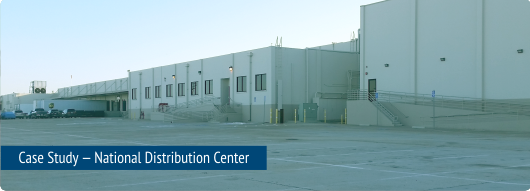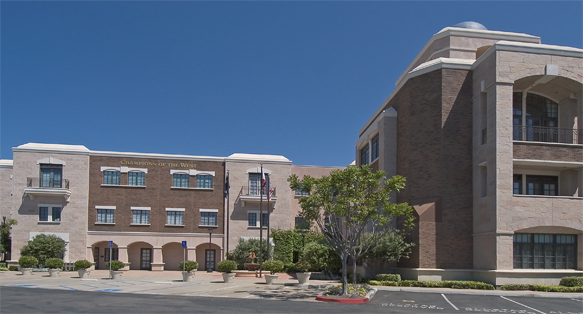How long have you worked in/on Yardi?
I have over a decade of in-depth Yardi experience, specializing in crucial areas like Advanced Budgeting and Forecasting for commercial clients and Investment Management. My final role as a Technical Consultant further honed my expertise, giving me a holistic understanding of the system’s capabilities.
Why is it good/necessary to work with a programmer knowledgeable in Yardi?
A Yardi-knowledgeable programmer streamlines implementation, customization, and everyday workflows. They understand the complexities of Yardi’s setup and can alleviate the frustration of repetitive or time-consuming tasks. This frees you to focus on your core expertise, maximizing both efficiency and job satisfaction.
Why do you need a programmer when using Yardi? Or why is it important to use someone who knows what they’re doing?
While Yardi is powerful, it can also be complex. A skilled Yardi expert navigates its intricacies, ensuring proper configuration, accurate reporting, and streamlined processes. This translates to less frustration, faster time-to-value, and confidence that you’re maximizing the system’s potential.
Why is it important to make sure a user’s set up in Yardi is correct? (looking for a ‘garbage in, garbage out’ kind of answer).
Yardi is a powerful property management software, but its effectiveness hinges on proper configuration – especially when it comes to menus and user setups. As a seasoned Yardi database administrator at Meissner, I’ve seen firsthand how getting these fundamentals wrong can lead to security breaches, workflow snags, and a host of other problems.
Let’s dive into ten compelling reasons why investing time and expertise into user configuration is a must for any Yardi user:
- Data Security and Integrity: Incorrect user setups create vulnerabilities, allowing unauthorized access to sensitive information. Inaccurate data entry compromises the reliability of everything Yardi produces. Think of it as “garbage in, garbage out”.
- Compliance Adherence: Improper configurations can lead to violations of industry regulations, resulting in costly fines and legal issues. Meissner’s expertise helps Yardi users stay on track with these standards.
- Workflow Efficiency and Accuracy: Tailored menus and user permissions streamline processes, making it easier for users to find the tools they need and reducing errors. Less frustration, less wasted time.
- User Experience and Training: Overly complex setups make Yardi daunting for new users and frustrating for veterans. Meissner simplifies this, improving user adoption and boosting productivity.
- System Performance and Stability: Inefficient setups can tax Yardi’s performance. Optimizing user configuration is essential for system health and responsiveness – especially as your organization and data demands grow.
The Bottom Line
Messy user configuration is like building a great house on a bad foundation – it’s a recipe for trouble. That’s where Meissner’s Yardi expertise comes in. We understand the deep connection between proper setup and your organization’s success.
How can using Meissner as a database administrator help a Yardi user?
Unlocking Yardi’s Full Potential: Why Meissner is Your Database Administration Partner
Yardi is a complex and powerful property management software, but it takes expert hands to make it truly shine. That’s where Meissner comes in. Our experienced Yardi database administrators optimize your system for success. Here’s how partnering with Meissner directly benefits you as a Yardi user:
- Elevated security and data integrity: Meissner strategically designs your user access and implements robust protocols to protect your sensitive information.
- Compliance made easier: We’re fluent in the regulatory demands of the real estate industry. Meissner helps you stay compliant, minimizing risk and potential fines.
- Streamlined workflows for maximum efficiency: Meissner tailors your setup, matching menus and user rights to specific job functions for a smoother, more productive workday.
- Simplified training and expert support: From initial setup to ongoing questions, Meissner is there to guide your team. Confusion is replaced with confidence.
- Optimized performance for a seamless experience: Our proactive approach keeps your Yardi database running at full speed – even as your business grows.
- Troubleshooting and problem-solving: Meissner’s Yardi expertise allows us to spot and fix issues before they become major headaches, ensuring minimal downtime.
- Unlock the power of your data: We go beyond configuration, offering custom reporting and analysis to turn your Yardi data into actionable business strategies.
What is your favorite/most efficient customization?
One of my favorite customizations revolves around streamlining invoice processing. By understanding the client’s specific workflow and pain points, I built several automations and custom reports that significantly improved efficiency.
Firstly, I integrated their AP system with Yardi, allowing invoices to be imported directly with minimal manual data entry. This alone saved their team hours each week.
Next, I developed a validation step which exported any errors or warnings via SFTP to highlight potential discrepancies between the system and scanned invoices. Initially this helped them catch errors early in the process, preventing costly delays later, and eventually allowed them to avoid these errors and warnings altogether.
Finally, I designed a dashboard providing real-time visibility into invoice statuses, bottlenecks, and vendor performance metrics. This gave the client greater control over their payables process and the data to make informed business decisions.
This customization not only made life easier for the AP team, but also led to improved accuracy and more timely payments for the organization.
In your experience, how much of the Yardi software are customers using if they don’t work with a knowledgeable programmer?
The percentage of Yardi’s functionality a client can effectively leverage without technical expertise varies greatly. Some clients have straightforward needs and might find the out-of-the-box features quite sufficient. Others with complex reporting, integrations, or unique business processes likely miss out on the software’s full potential.
I’ve seen cases where clients underutilize Yardi due to a lack of understanding or time constraints. They might rely on manual workarounds or not take advantage of automation, leaving efficiency gains on the table.
Often, it’s not about using 100% of Yardi, but rather ensuring they’re using the most critical and impactful parts aligned with their business needs. That’s where a knowledgeable programmer can make a dramatic difference – analyzing those needs, tailoring Yardi, and building custom tools to bridge any gaps in the standard functionality.
Learn more about Meissner’s Yardi Consulting Services and how we can unlock the full potential of Yardi for your business!











